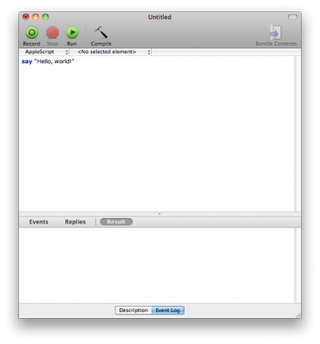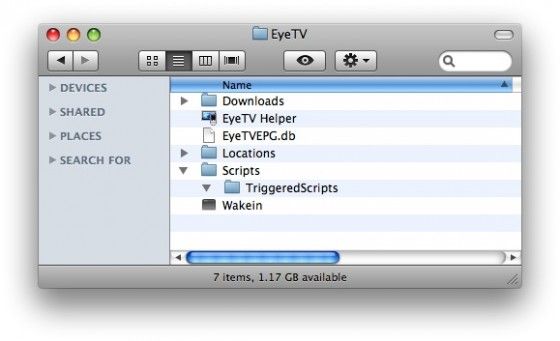
- YEARS USED RUNONLY APPLESCRIPTS TO DETECTION HOW TO
- YEARS USED RUNONLY APPLESCRIPTS TO DETECTION PDF
- YEARS USED RUNONLY APPLESCRIPTS TO DETECTION CODE
YEARS USED RUNONLY APPLESCRIPTS TO DETECTION CODE
MACOS RUNONLY APPLESCRIPTS TO AVOID DETECTION CODE The command to establish control is a very simple one-line reverse shell that looks something like this: What we’re interested in today is less about how the adversary is able to exploit the system, but what they do once they land in your network. This establishes the connection back to the actor’s system, allowing the use of the tools within the framework. In some compilations of bash, the OS vendor can elect for “pseudo-files” to be created in /dev/tcp/ and /dev/udp/ when commands such as these are run.
YEARS USED RUNONLY APPLESCRIPTS TO DETECTION PDF
Instead, we will want to monitor command-lines referencing “/dev/tcp/”:Īs an aside, building detection capabilities for all major Office and PDF applications spawning child processes such as shells (sh, bash, etc.) and scripting processes (python, powershell, osascript, etc.) can help you find this and a lot of other evil things.Īpple’s implementation of bash doesn’t do this, and as such monitoring for the creation of these files won’t detect this particular threat. MACOS RUNONLY APPLESCRIPTS TO AVOID DETECTION PDF We see this technique used quite frequently in malware and phishing campaigns.Īs for prevention, standard security hygiene applies. Limit your attack surface by disabling Office macros, keeping your systems and applications patched, and putting any preventative controls you can between your users, their emails, and the internet at large. Unfortunately you can’t stop everything at the perimeter, but by putting some basic controls in place, you can avoid being the “low-hanging fruit” victim, and all but the most determined adversaries will pass you by. In this case, firewalling may be your best safeguard for this type of threat. Using a firewall utility such as LittleSnitch or the built-in Mac firewall with explicit allowances for required traffic stops this callback in its tracks.īelow is an example prompt from LittleSnitch when a connection attempt is made that is not explicitly approved in your configuration. Once you have locked in the desired firewall configuration on your endpoints, a default “deny any” rule will prevent users from allowing this type of connectivity when prompted.

Once the threat actor has established a remote connection to the victim’s system, they can establish persistence using the “persistence” function in EggShell. This function uses the built-in cron functionality to add a recurring task to the user’s crontab, allowing the attacker to resume control of the Mac after a reboot or other interrupted connectivity. MACOS RUNONLY APPLESCRIPTS TO AVOID DETECTION MAC Watch for the creation of new crontab entries. This could be noisy on a production Linux server, but should result in a higher fidelity detection for end user endpoints.


MACOS RUNONLY APPLESCRIPTS TO AVOID DETECTION CODE.MACOS RUNONLY APPLESCRIPTS TO AVOID DETECTION PDF.
YEARS USED RUNONLY APPLESCRIPTS TO DETECTION HOW TO


 0 kommentar(er)
0 kommentar(er)
